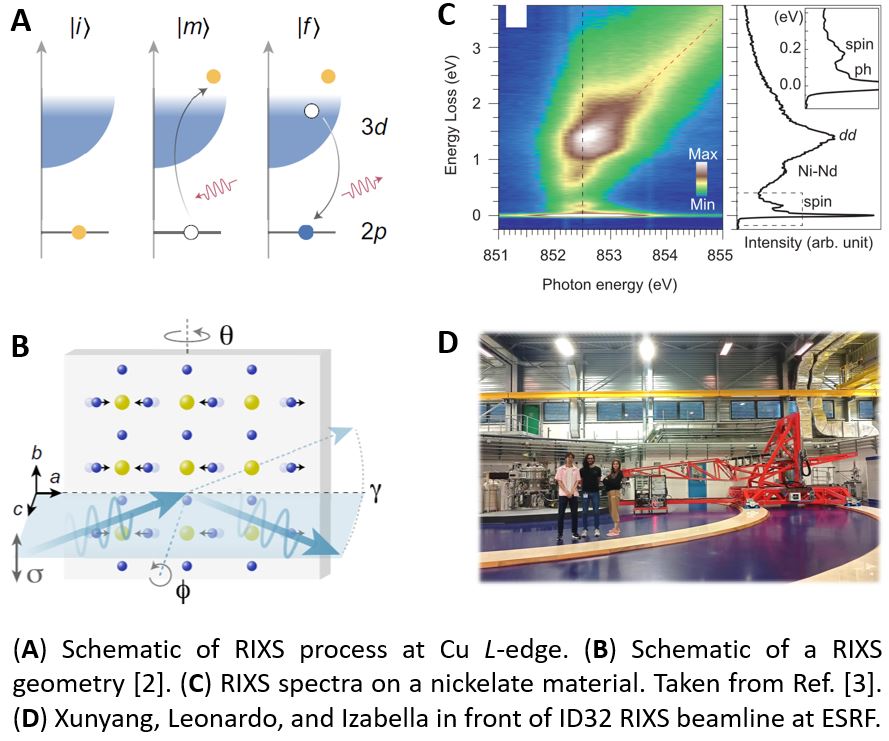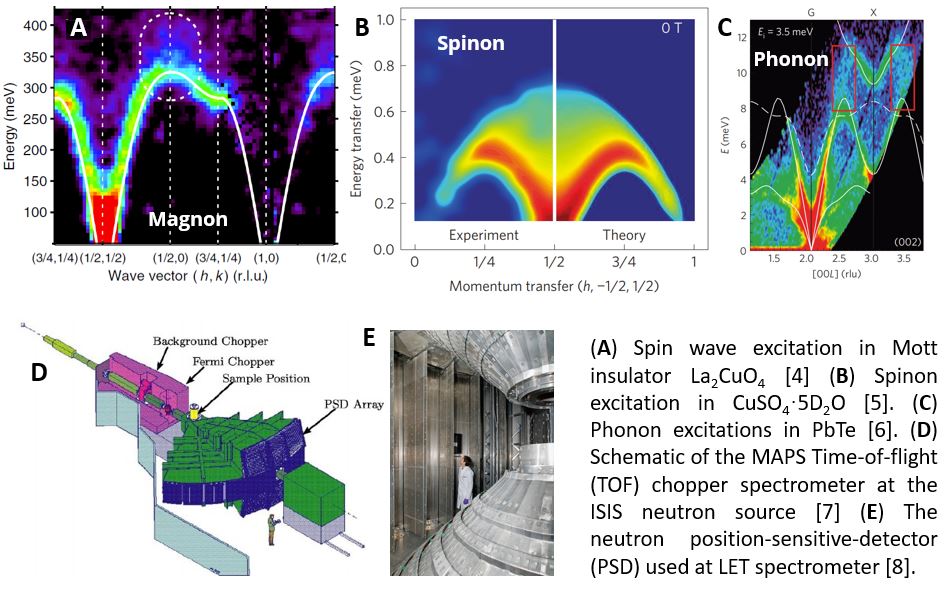We perform X-ray and neutron scattering/spectroscopy experiments at large-scale facilities like synchrotrons and neutron sources to study the static and dynamic properties of crystal lattices, electrons, spins and their interactions in condensed matter systems. We also perform in-house X-ray diffraction and transport measurements.
Resonant Inelastic X-ray Scattering (RIXS)

References
[1] P. Ament et al., Rev. Mod. Phys. 83, 705 (2011).
[2] Q. Wang et al., Sci. Adv. 7, eabg7394 (2021).
[3] H. Lu et al., Science 373, 213 (2021).
Neutron Scattering
References
[4] N. S. Headings et al., Phys. Rev. Lett. 105, 247001 (2010).
[5] M. Mourigal et al., Nat. Phys. 9, 435 (2013).
[6] O. Delaire et al., Nat. Matter. 10, 614 (2011).
[7] I. Bustinduy et al., Rev. Sci. Instrum. 78, 043901 (2007).
[8] R. I. Bewley et al., Nucl. Instrum. Methods Phys. Res. A 637, 128 (2011).

Useful Links
[DAWN] [RIXSToolBox] [SpinW] [Sunny] [SpinWave] [McPhase] [McStas] [FullProf] [HORACE] [TobyFit] [MSLICE] [PACE] [MANTID] [DAVE] [MJOLNIR] [Data-Slicer] [ISOTROPY] [EDRIXS] [QUANTY] [CTM4XAS] [ICSD] [The Materials]
